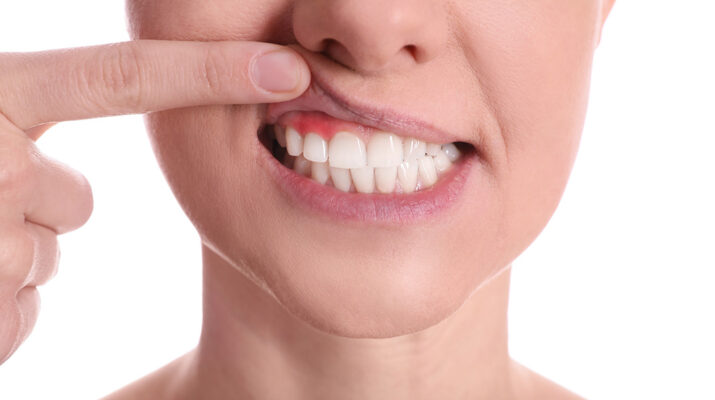Periodontal (gum) disease is a broad term for conditions involving inflammation and infection of the tissues (gum and bone) that surround and support the teeth.
Gingivitis is a type of gum disease that involves inflammation of the gums. It is largely preventable and treatable with a combination of routine oral hygiene and professional cleanings.
Periodontitis, which also involves bone loss around teeth, is an irreversible condition that can be slowed down and managed with professional treatment.
Periodontitis is a very common type of gum disease among U.S. adults:
• About 4 in 10 U.S. adults 30 years or older had a mild, moderate, or severe level of periodontitis in 2009–2014.
• About 1 in 2 men and 1 in 3 women 30 years or older had some level of periodontitis.
Periodontitis is more common as people age. About 60% of adults 65 years or older had periodontitis in 2009–2014.
Types
Two of the most common types of gum disease are gingivitis and periodontitis.
• Gingivitis
The mildest form of gum disease is gingivitis, an inflammatory condition where the gums become red, swollen and may easily bleed. Gingivitis is a reversible condition. But if left untreated, it can lead to a gum disease called periodontitis.
• Periodontitis
Periodontitis is a chronic inflammatory condition that leads to mild, moderate, or severe destruction of the supporting tissues around teeth. A main feature of periodontitis is bone loss around the affected teeth. Untreated periodontitis can also make other chronic conditions, such as diabetes, worse.
Periodontitis cannot be reversed, but it can be slowed down and managed with professional treatment. Periodontitis and cavities (tooth decay) are the two leading causes of tooth loss.
Signs and symptoms
Gum disease can often become serious before a person notices that they have symptoms. A yearly dental checkup can help to detect and prevent this condition.
Signs and symptoms of gum disease may include:
• Red, swollen, or tender gums.
• Bleeding gums.
• Gums that have moved away or downward from your teeth.
• Loose or sensitive teeth.
• Painful chewing.
• Any change in the way your teeth fit together when biting.
• Any change in how well your partial denture fits.
Causes
It is normal for some bacteria to live in a healthy mouth. Bacteria in the mouth constantly produce and dwell within a sticky, removable film on tooth surfaces called plaque.
If plaque is left to build up on a tooth, it can lead to inflammation around the tooth and result in gingivitis. Plaque can be removed regularly with toothbrushing and flossing. If it is not removed, it will usually harden into tartar (also called calculus). Tartar buildup cannot be removed with toothbrushing. Professional treatment is needed to remove it.
Bacteria in buildup can spread below the gumline and lead to the formation of a periodontal “pocket.” This pocket is an abnormal deepening of the space between tooth surfaces and gum tissues. Bacteria can release toxins in the pocket that make inflammation worse.
As this process continues, it contributes to the destruction of gum tissues and bone loss around the teeth, which is a main feature of periodontitis.
Source: Centers for Disease Control and Prevention (CDC)

